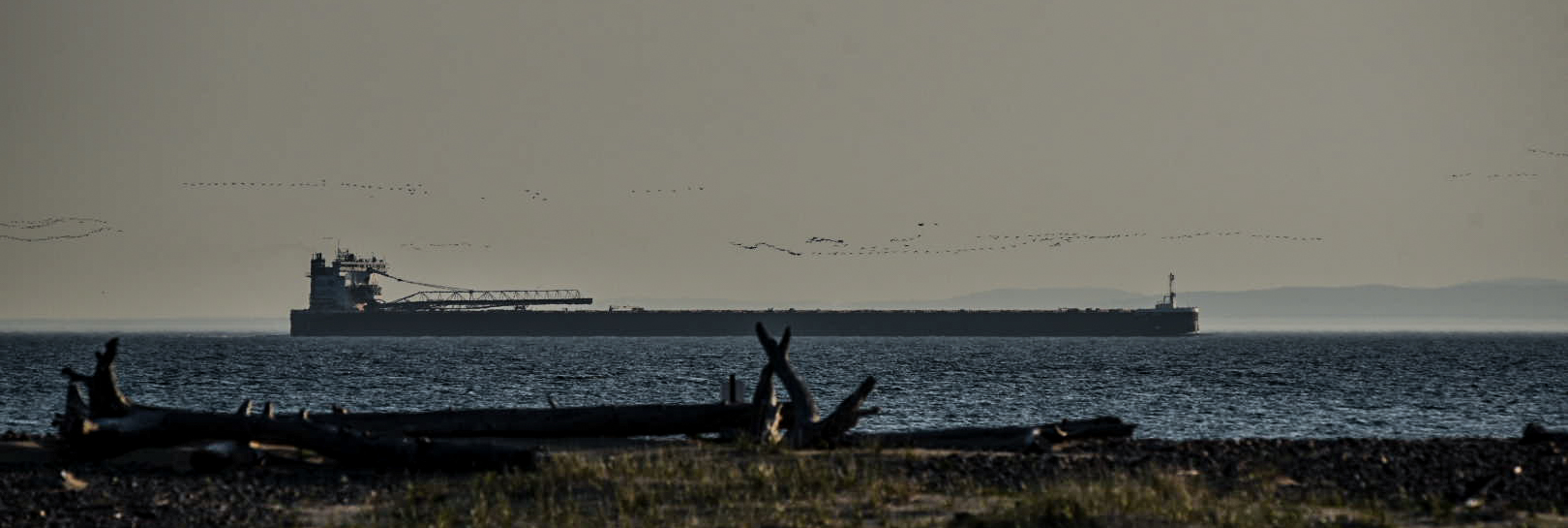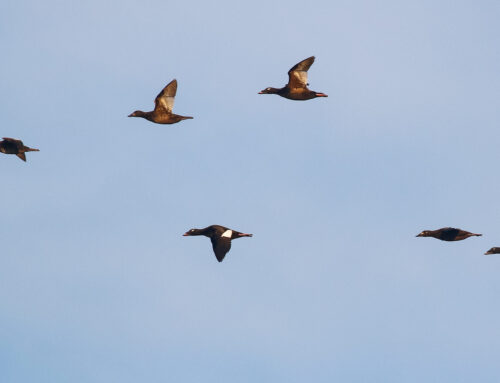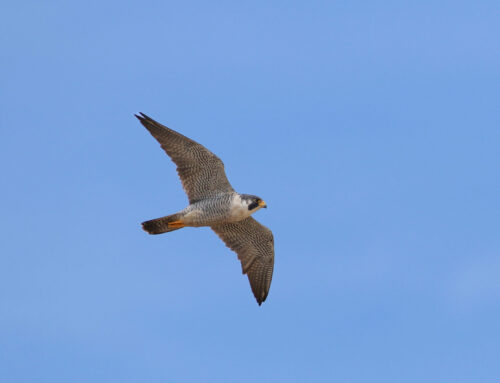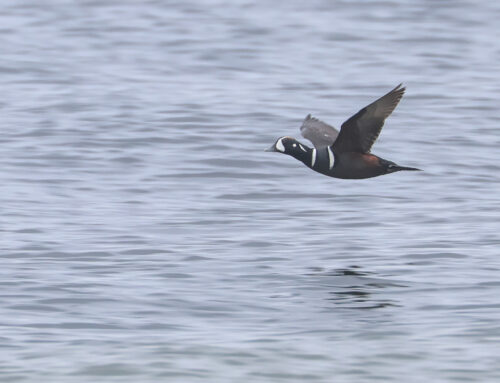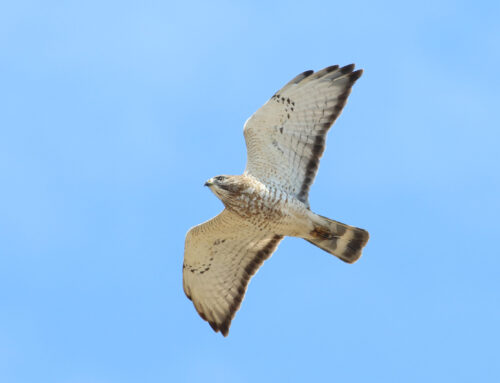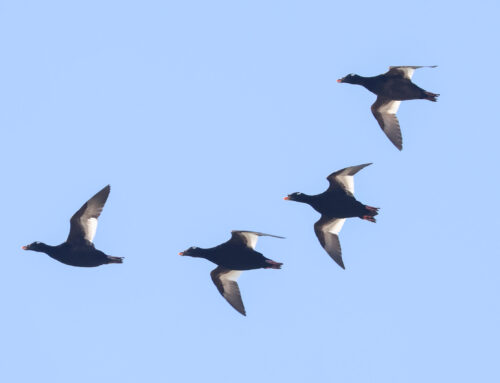The last week of the 2023 spring waterbird count has been defined by two things: the mosquito hatch and the Canada Goose molt flight. In their own right, both of these happenings are fairly remarkable natural phenomena.
We’ve got two periods of heavy Canada Goose movement at Whitefish Point. The first is towards the beginning of the waterbird count, and this year I suspect that geese were flying before the start of the waterbird count — I tallied just 628 in the first three days (April 15-17), and the weather prior to April 15 was good weather for geese to migrate in.
Then, in late May, we start seeing goose flocks at WPBO again. These are birds from the Mississippi Flyway giant population that are either sub-adults (most Canada Geese don’t breed till they’re three) or failed breeders. These birds are headed all the way up to James and Hudson Bays to molt. There, they’ll have the refuge and food resources they need as they lose all their flight feathers and enter a stage of vulnerability. To me, this is awfully cool. Perhaps, at the end of the field season, the ideas of feasting and flightlessness — and, yes, changing my clothes — contain substantial appeal. In the last week, I tallied 5,895 Canada Geese, with the peak (3,256) occurring on May 25.
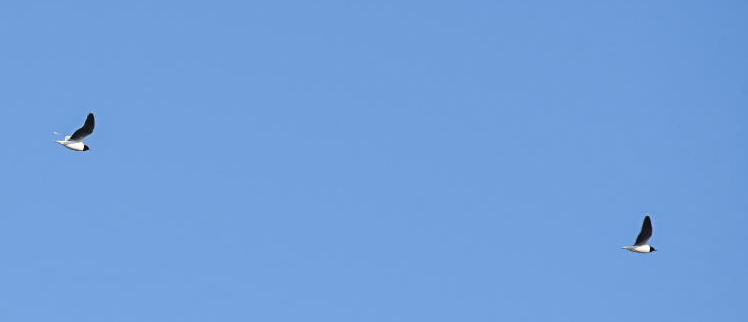
Little Gulls over the waterbird shack on May 25. Note the blunt wingtips and dark underwing — vital identification characteristics for this species! Photo by Alison Világ
Other highlights this final week of the count include the season’s fifth (!) Pacific Loon (May 30) and three Little Gulls (May 25). Little Gulls, the world’s smallest gull, are little-known; there have been just a few dozen nests found in North America, in James and Hudson Bays, the Great Lakes, and the St. Lawrence Seaway. They passed directly over the waterbird shack alone; the only thing I can say with confidence regarding their direction is that it is someplace that I, too, would like to be going, preferably by canoe. The Boreal Chickadees have lingered all the way to the end, and the Mississippi Kite that Raptor Counter Jess Cosentino had up on the hawk deck on May 29 passed over the waterbird shack at a delightfully close range.
Speaking of canoeing, on Sunday evening, I put in at the state harbor, paddled around Whitefish Point, and headed west up on the shore. I was elated that the Lake was placid enough to permit such an endeavor and was proud of myself for choosing to push through my late-spring exhaustion and not let this opportunity pass on by.
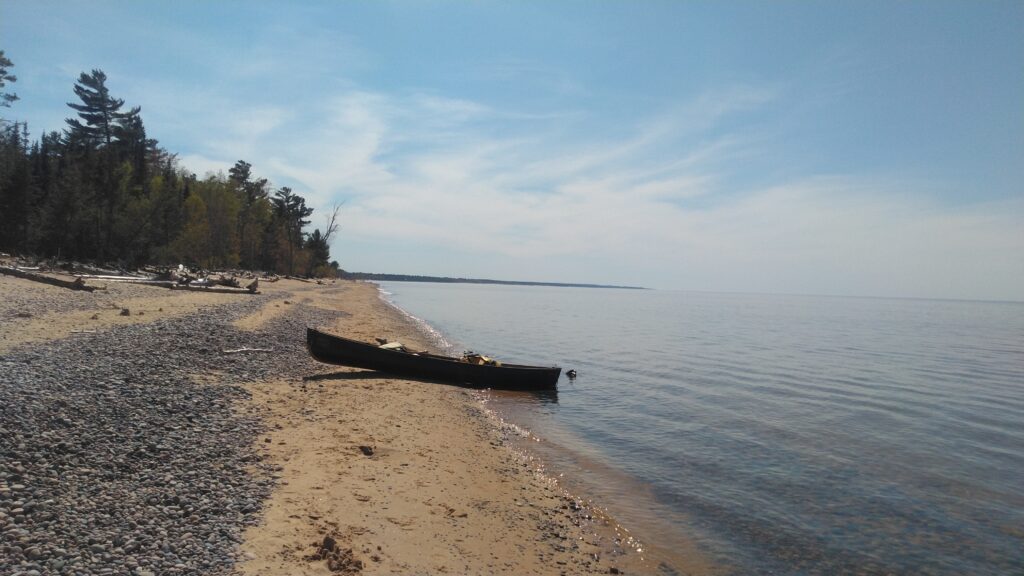
Canoeing on Lake Superior and enjoying time on the shore west of Whitefish Point. Photo by Alison Világ
The best part, though, was the next morning. To make it to the waterbird count by sunrise, I started paddling back to the Point around 2:30 a.m. There was no light except the waxing moon settling into my wake; no sound except loon cries and a few flight calls of migrating warblers and thrushes. It was like I was paddling through a suspension of stars, and the milky way was just gut-wrenchingly beautiful. This was the first I’d experienced it from the water, and it was more arc than plane. I could feel the curvature of the earth, and I could feel that, within it, I was very small.
I especially loved rounding the last corner before the Point, when the owl banders’ audiolure and the lighthouse beam joined the nightscape. That lighthouse has been, in its own way, a navigational device for me; has been a great aid as I’ve charted my own migrations.
Thank you, readers, for all the support you’ve shown me these last four years at WPBO.
~ Alison Világ
2023 Spring Waterbird Counter
Featured photo: A flock of molt flight Canada Geese passing a freighter. Photo by Alison Világ

Canada Geese on their way up to the Arctic to molt. Photo by Alison Világ

